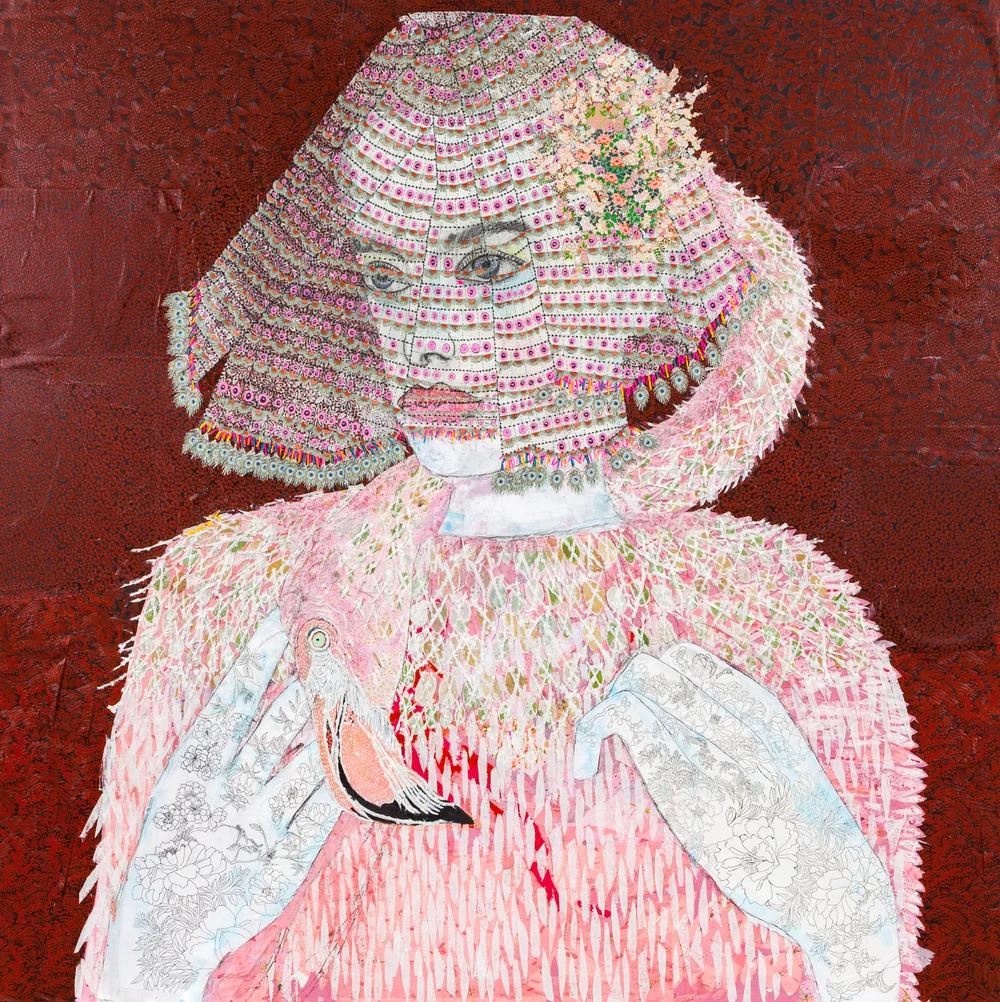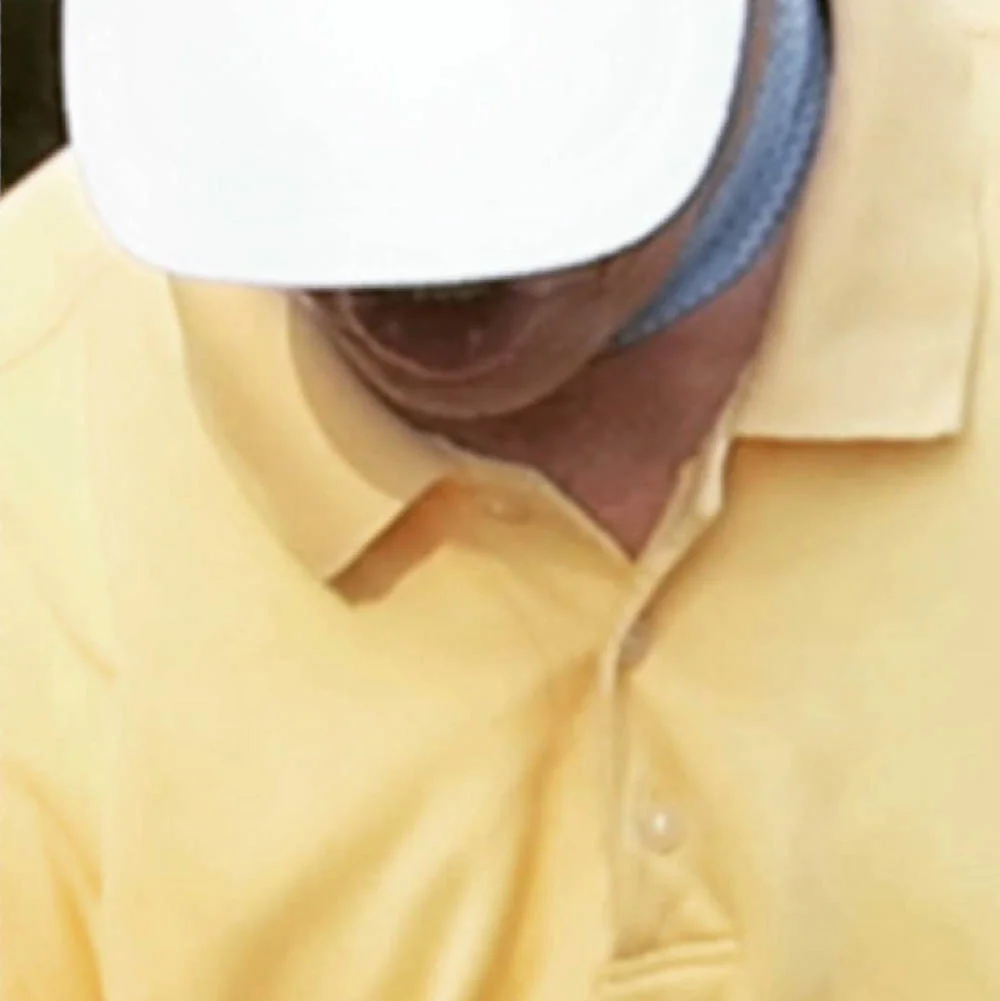Maria Berrio
Artist Maria Berrio was born in Bogota, Colombia in 1982. She received her MFA from the School of Visual Arts in 2007. Berrio’s dreamy works encapsulate a surreal environment satiated with color and intricate patterns. Her mixed-media works leave one with a haunting sense of beauty and awe.
She is currently based in Brooklyn, New York.
You create many of your works with very particular Japanese, Thai, and Nepalese patterned papers. What is the significance of using such materials and how did it come about into your practice?
I experimented with painting before collage, though painting and I always had an uncomfortable relationship. I am too messy with brushes and I treat them very badly. I was never neat enough or patient enough to mix paint or to wait until it dried. With collage there is instant satisfaction: you tear a huge piece of paper and there you go, you have a sky. There is pleasure in the raw physicality of the art form-- -not simply applying a medium, but tearing it, forming it, cutting it, spreading glue with sticky fingers, feeling the various textures of the different papers. I began using collage after a discussion I had with a close friend. I was discussing my anxious impatience with painting, to which she suggested I try using fabric. I experimented with fabrics for a while, but I was unsatisfied by the edges. However, I realised [that] Japanese paper will be great since the edges blend more organically and mix to each other like paint. It was then when I felt in love with paper, and I have been making collages ever since.
What inspires the dreamy, surrealist environment in your works? Can you describe how this magical world of yours would smell? Does it exist—can it exist?
These surreal environments mostly arose when I moved to New York City. I grew up very close to nature, animals were important to us, not only in everyday life but in the stories we were told growing up and the stories about our ancestors. When I moved to New York city, my relationship to nature changed, i.e. the expanses of farmland were replaced by blacktop and concrete, so I began to invent my own environments in my paintings. I would spend days drawing animals in the Museum of Natural History in New York, but it seemed unfair that these lovely creatures could live in a great city and never get to explore it at all. So I began to take them back with me, show them around town, let them stay at my apartment. I began to combine things that don’t belong to each other, and became fascinated by the unlikely juxtaposition of things.
These places exist to me most vibrantly when creating the works. I get deeply absorbed into the world I’m creating, to the point where the work invades my thoughts and often my dreams, and eventually begins to seem more real than my own reality. By the time I’ve completed a piece, I’m not only exhausted of the world, but I’ve grow to hate its’ demanding intrusiveness. To be able to make another painting, I have to detach myself completely from the prior work. It is only after some time has passed that I can look at a work I’ve made again. I will get a glimmer of its existence, but never one as overpowering as when I was creating it. It’s less virile existence allows me to appreciate it more. I hope these worlds can exist for others too, that other people can be transported as well, even for a minute.
As for smell, it’s mostly. . . glue? I don’t usually have much of an olfactory imagination when I’m painting, but if i close my eyes I detect the smell of moss, rain, flowers and then a faint whiff of New York City garbage in in the summer heat. That’s the downside of juxtapositioning, I suppose.
Many of the collages include strong women characters surrounded by nature—often in direct contact with animals in a very symbiotic relationship. Can you expound upon this narrative?
I love being a woman, and the strength that women have. I in turn try to depict strong, brave women. And yet there is an uncomfortable ambiguity lying underneath. These women are powerful creatures, but Nature is a force stronger than any human will. The relationship between these women and animals can never be that of the conqueror and the conquered, nor can it be an idyllic open discourse between equal parties: the relationship is never completely harmonious. The characters fit in the scene, but only just so. The bejeweled woman in the sinewy lushness of jungle, the leopard docilely perched atop an ottoman, they both may make themselves at home in their new exotic environments, but they are part and not-part. They forever bear the imprint of their origins and never completely meld into their surroundings. This relates to my own experience as an immigrant, but is also a springboard to explore ideas of power relationships, femininity, humankind’s impact on nature and nature’s impact on humankind.
Your works are imbued with beauty and travel motifs, especially as we often see the butterfly in many of the collages. What draws you to this insect?
A butterfly conjures a number of ideas in one’s mind, of beauty, of freedom, of fragility. But it’s still an insect, a creature that brings a number of other notions with it. What living creature seems more foreign to our own ways of being than an insect? What could be more alien? Take away the dainty gloriousness of its wings, and a butterfly becomes, well, a bug. And while I don’t mean to offend any entomologists, don’t most people find insects vaguely repellent? (There is of course an irrational hierarchy human beings construct for the likability of the insect world, where ladybugs and cockroaches are in far different strata). I’m intrigued by the mix of ideas of beauty and fragility with repulsion and foreignness.
Likewise, my paintings often explore themes that seem well symbolized by butterflies. The transient nature of life, the fragility of our species, the experience of migration to distant lands, the beauty and mystery of this world we all live in-- -- all of these ideas and more can be encapsulated in the symbol of a single, wondrous being.
Images courtesy of Maria Berrio
words PERWANA NAZIF
What to read next






